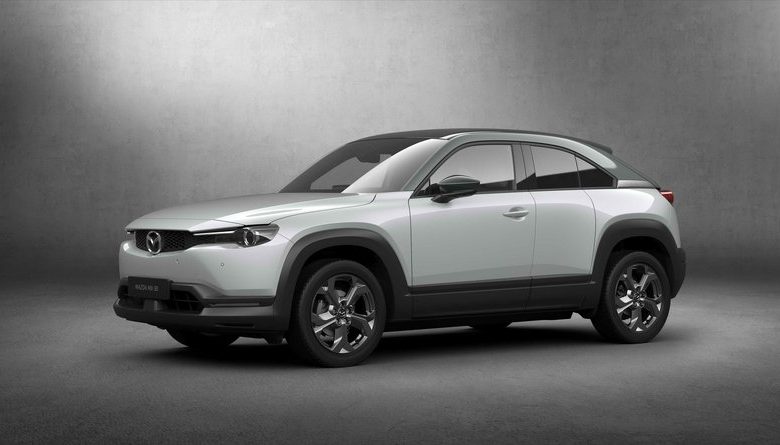
Mazda’s MX-30 electric crossover debuts with ‘right sized’ battery pack
First and foremost, it comes with a relatively small 35.5 kilowatt hour battery pack, which helps to hold down overall weight to about 1,700 kg. That has a positive effect on driving dynamics, but at the same time limits its range to about 200 km, less than direct competitors such as the Hyundai Kona.
Those figures are preliminary, as Mazda hopes to complete the European homologation by March and announce official figures at the MX-30’s European debut at the Geneva auto show. Prices are expected to start at about 35,000 euros.
Aoyama said that Mazda could face emissions penalties in 2020 because the company is just starting the transition to electrification, but he added that it is too soon to predict if that risk also extends to 2021.
The MX-30s battery pack is made of 192 lithium ion prismatic cells supplied by Panasonic.
Instead, for 2021, Mazda is planning to add a small gasoline rotary engine as a range extender. Mounted on the side of the electric motor, it will be used to recharge the battery rather than directly powering the wheels. Mazda declined to offer more technical details about the engine.
Among the MX-30s competitors, the Hyundai Kona’s base electric model offers a 39-kWh battery pack that permits 289 km of range under the WLTP cycle, with a price of about 38,000 euros. A larger 64-kWh battery pack that permits 449 km of range is available for an additional 5,000 euros.
Another competitor, the Volvo XC40 Recharge, comes with a 78-kWh battery pack that permits over 400 km of range under WLTP testing. The price is expected to be slightly below 60,000 euros in Germany.
The MX-30 has small forward-opening rear doors to allow easier access for passengers.
The MX-30 is based on the same underpinnings as the CX-30 compact crossover, but its tapered rear conveys a sportiness that is meant to pay tribute to Mazda’s MX models, including the MX-5 sports coupe and convertible.
The MX-30 also has a sleeker roofline than the CX-30 and two small front-opening doors for rear passengers, similar to those of the discontinued RX-8 sports car.
Some electric vehicles do not have a traditional grille at all, but the MX-30 retains a slim one, “because we wanted it to look like a Mazda, not an EV,” said Jo Stenuit, design director at Mazda Europe.
In Portugal, Mazda offered a preview of the MX-30’s driving dynamics, fitting its battery pack and electric motor into a modified production CX-30.
A short test drive showed that Mazda has prioritized a balanced approach. Acceleration is good but not as strong as some other electric vehicles. The electric motor powering the front wheels delivers 105 kilowatts, equivalent to 143 hp. Maximum torque is 265 newton meters, or 195 foot pounds.
Font: Automotive News Europe





